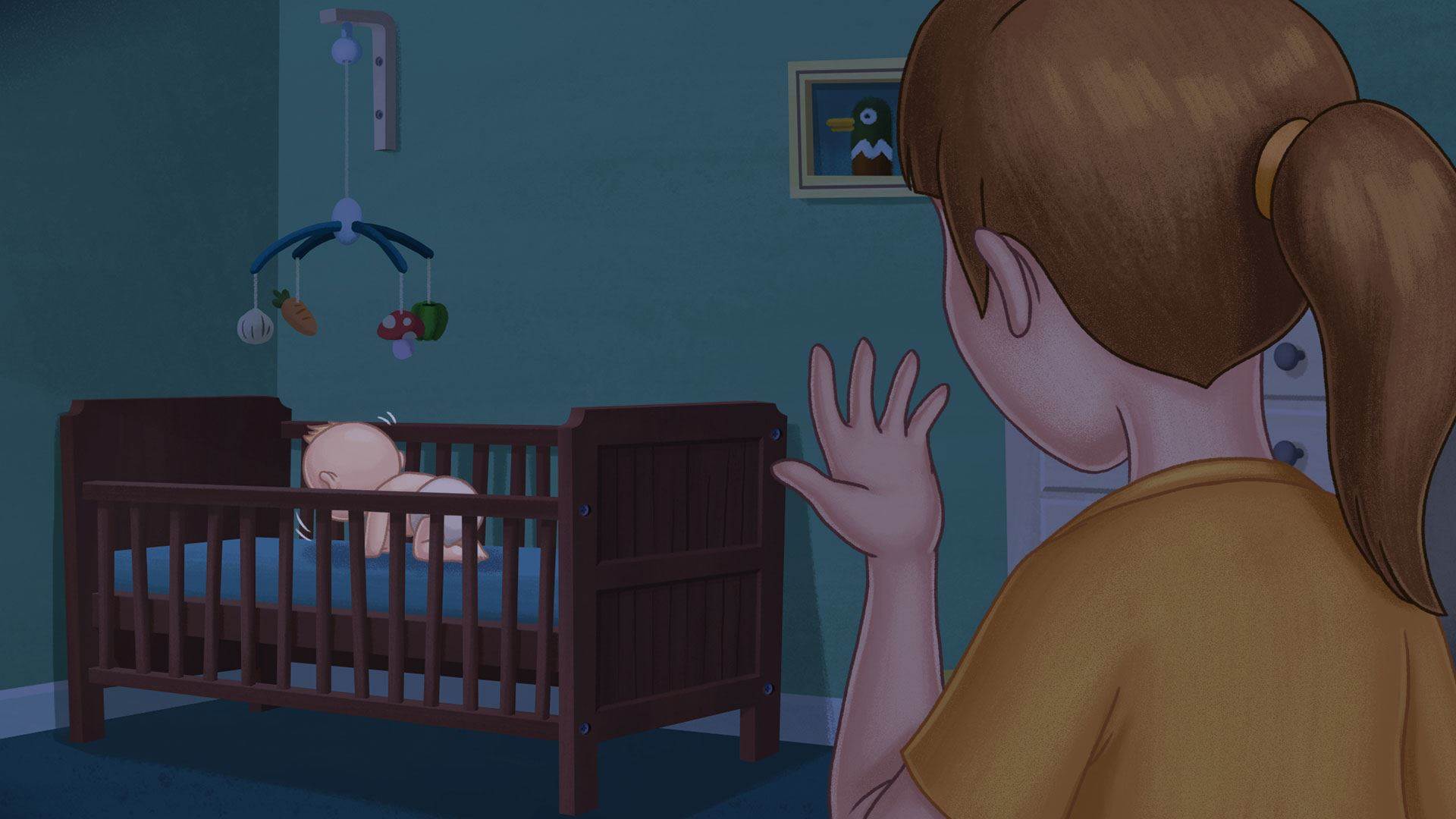Arthritis is inflammation of the joints, leading to pain and difficulty moving the joint. There are many different types of arthritis that can affect children. These conditions may also be called juvenile arthritis.…

Headbanging
What is headbanging?
Headbanging is where infants and young children repeatedly bang their head against something in a rhythmic motion. It is surprisingly common in infants, with around 15% of infants aged 9-18 months and about 9% of two-year olds exhibiting headbanging behavior. Headbanging is common in boys and girls and is generally temporary and harmless, but can last into childhood for some people. Headbanging can also occur during tantrums, or in people with certain medical conditions including sleepwalking, autism or Tourette syndrome.
Tourette syndrome
An inherited neuropsychiatric disorder that is characterized by involuntary physical and at least one vocal tic.
Kurtz, P.F., Chin, M.D., Huete, J.M., et al. (2003) Functional analysis and treatment of self-injurious behavior in young children a summary of 30 cases. Journal of Applied Behavior Analysis 36:205–19.
Causes
The exact cause of headbanging is unknown, but there are some reasons why your child may be banging their head. These can include:
- Self-comfort - strangely enough, children bang their head rhythmically to soothe themselves and fall asleep, or if they have woken up during the night;
- Pain relief - toddlers may bang their head to distract themselves from pain, for example, while teething, and;
- Frustration or attention - toddlers vent frustration through headbanging, or use headbanging as attention-seeking behavior.
Kurtz, P.F., Chin, M.D., Huete, J.M., et al. (2003) Functional analysis and treatment of self-injurious behavior in young children a summary of 30 cases. Journal of Applied Behavior Analysis 36:205–19.
Risk factors
There are no specific risk factors for headbanging in toddlers. Children with conditions including autism spectrum disorder, sleepwalking or Tourette syndrome are more likely to headbang.
Tourette syndrome
An inherited neuropsychiatric disorder that is characterized by involuntary physical and at least one vocal tic.
Kurtz, P.F., Chin, M.D., Huete, J.M., et al. (2003) Functional analysis and treatment of self-injurious behavior in young children a summary of 30 cases. Journal of Applied Behavior Analysis 36:205–19.
Signs and symptoms
Signs and symptoms of headbanging include the rhythmic banging of one's head against various objects. For infants, this is commonly a pillow, bed, or bedhead and occurs at bedtime or nap time. In other instances, a wall, door or table are sometimes used. Headbanging can involve banging either the front or back of the head every few seconds and can last for around 15 minutes.
Kurtz, P.F., Chin, M.D., Huete, J.M., et al. (2003) Functional analysis and treatment of self-injurious behavior in young children a summary of 30 cases. Journal of Applied Behavior Analysis 36:205–19.
Methods for diagnosis
Headbanging can be diagnosed by your doctor after an explanation of your child's signs and symptoms.
Kurtz, P.F., Chin, M.D., Huete, J.M., et al. (2003) Functional analysis and treatment of self-injurious behavior in young children a summary of 30 cases. Journal of Applied Behavior Analysis 36:205–19.
Types of treatment
In most cases, treatment is not required and children will grow out of the behavior.
Headbanging behavior is generally considered a disorder if there is significant sleep disruption, or if it results in injury. Management techniques can include ensuring that their cot or bed is secure and stable, with ample padding or pillows and, if required, a guard rail.
Keeping a diary of when and for how long your child has headbanging behavior, can help identify the reason your child is headbanging. If you have established that headbanging behavior is attention-seeking related, it is important to avoid giving in to your child, as this can reinforce headbanging behavior. If you have noticed that headbanging is being performed as a pain-relief method for an underlying medical condition - for example, an ear infection - it is important to seek appropriate medical care from your doctor.
If your child has headbanging behavior that causes them to injure themselves, or puts them at risk of injuring themselves - for example, during sleepwalking - protective headwear may be worn.
 Protective headwear, such as a specialized helmet, can minimize risk of injury.
Protective headwear, such as a specialized helmet, can minimize risk of injury. Kurtz, P.F., Chin, M.D., Huete, J.M., et al. (2003) Functional analysis and treatment of self-injurious behavior in young children a summary of 30 cases. Journal of Applied Behavior Analysis 36:205–19.
Potential complications
In most cases there are no long-term complications of headbanging behavior. It is possible for some children to harm themselves from headbanging against hard objects. If this occurs, it is important to consult your doctor and seek medical treatment.
Kurtz, P.F., Chin, M.D., Huete, J.M., et al. (2003) Functional analysis and treatment of self-injurious behavior in young children a summary of 30 cases. Journal of Applied Behavior Analysis 36:205–19.
Prognosis
Headbanging in toddlers is a relatively harmless and temporary condition that can occur in the first few years of life. However, in cases where headbanging persists into childhood, it can be an indicator of a developmental disorder, such as autism.
Kurtz, P.F., Chin, M.D., Huete, J.M., et al. (2003) Functional analysis and treatment of self-injurious behavior in young children a summary of 30 cases. Journal of Applied Behavior Analysis 36:205–19.
Prevention
There are no specific prevention techniques for headbanging in toddlers.
Kurtz, P.F., Chin, M.D., Huete, J.M., et al. (2003) Functional analysis and treatment of self-injurious behavior in young children a summary of 30 cases. Journal of Applied Behavior Analysis 36:205–19.






